#electronic circuit designs
Explore tagged Tumblr posts
Text
Key Benefits of Professional Electronic Circuit Designs in Product Development
Electric circuit boards are a common component of almost all modern electronics, and electronic circuit designs is necessary for each and every one of these devices to function. It takes years of experience to design a high-quality electric circuit board, and experts in the field can put the best design schematics into practice to ensure that the product or appliance works as intended. When it comes to design the professionals follow a structured approach like consultation, product design, quality check, followed by client feedback.
For the greatest product development in Australia, a qualified PCB designer or electronics design engineer tests, prototypes, and makes design changes before delivering the finished product to the customer. In order to guarantee high-quality work, it's critical to choose a PCB design services provider with a staff of experienced electronics specialists. Because they are aware of the costs associated with PCB prototyping, professionals complete the process as cheaply as feasible. Poor PCB board design in the context of RF designs can have a number of detrimental repercussions that result in loss or product failure.

An Overview of the Services Provided by Companies That Design Circuit Boards
The Internet of Things, or IoT, has revolutionised the electronics industry by utilising high-speed embedded microcontrollers and wireless networks to link numerous gadgets. Many items, such as lightbulbs and temperature sensors, may be remotely controlled via the Internet of Things without requiring human involvement.
Animal Deterrent Systems: With the use of modern animal deterrent devices, crops may be protected against birds and other animals without endangering them. Using a wireless audio system to produce moving noises, this technique confuses and dissuades birds from flying into fields.
Calibration Repairs: Top designers are capable of doing the crucial and important task of calibrating various RCD testers. Electronics design companies also offer cable repair and calibration services.
Product Development: Professionals can design new electrical items based on specifications provided by clients. Professionals may help with ideation, IP protection, and product design.
The top experts in the field of electronics have years of expertise building circuit boards and utilising various microcontroller technologies. Hiring the most recognised electrical design professionals is the ideal plan of action for anyone intending to manufacture a product or keen to integrate electronics into real items.
Source: https://extrondesignservice.blogspot.com/2024/10/key-benefits-of-professional-electronic.html
1 note
·
View note
Text
Peavey LM⁽ᵗᵐ⁾ 8

I expected this to be a normal architectural mixer, but actually its a really nice rack mixer. it looks like peavey targeted this one at tv and recording studios. there seems to have been a stage vertion in black, but its pretty clearly not as well made.
This also has some of the prettiest pcb's Ive ever seen.




one thing I noticed that there is quiet a bit of empty space in the case, and I'm contemplating adding a spring reverb, normaled to one of the aux sends.

#music#mixer#reverb#music production#recording#diy recording#recording studio#music producer#electronics#circuit board#pcb design
9 notes
·
View notes
Photo
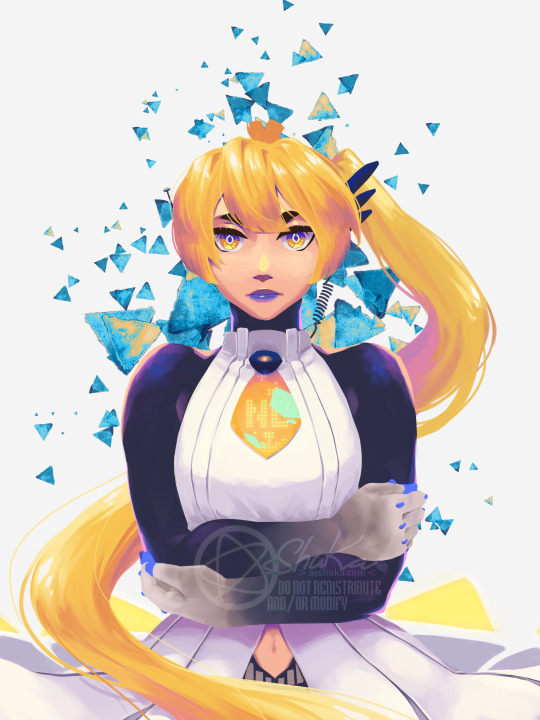
I ACCIDENTALLY DELOETED THE OG POST heres m-my take on neru append (trying to not cry)
kofi | patreon | commissions | more linkz
#vocaloid#vocasynth#fanloid#akita neru#neru akita#fanart#colored#artwork#2022#im so mad at myself i was cleaning out the bump reblogs but ig i'm not used to have new art posts in the same month :'''''''))#og post had 43 notes which is a lot for me cries#ANYWAY... gonna try my best to retain the details i shared on da tags of that post#design is part based on existing append designs and inspired by y2k tech!! that reminds me the append concept only existed for miku and#kagamines omf apparently a lot of people don't feel the same as me and there was backlash so append didn't continue#you can't see much of it in half body size but i sprinkled in internet modem elements also#i wanted to do transparent electronics for her hands but idk how to draw circuits and stuff so they're just translucent plastic#and her tie is a digital display based on the LG lollipop!#incidentally i went on a dumbphone research spree for different reasons after this and now i really want to design a whole phone for her#anywae i dont expect this post to get the same number of notes but it's important to keep stuff archived on my blog o(-----<
72 notes
·
View notes
Text
The Benefits of Ordering Printed Circuit Boards Online: A Guide to Choosing the Right PCB Manufacturer
In today's rapidly advancing technological landscape, printed circuit boards (PCBs) play a crucial role in various electronic devices, from smartphones to industrial machinery. As demand for these essential components grows, businesses and hobbyists alike seek efficient and cost-effective solutions for obtaining high-quality PCBs. One of the most convenient methods is to order printed circuit boards online. In this article, we will explore the advantages of ordering PCBs online and provide insights into selecting a reputable PCB manufacturer.
Why Order Printed Circuit Boards Online?
Ordering printed circuit boards online offers several benefits, making it an attractive option for many businesses and individuals:
Convenience: The ability to order PCBs from the comfort of your home or office eliminates the need for in-person visits to manufacturers or suppliers. This convenience saves time and effort, allowing you to focus on your projects or business operations.
Wide Range of Options: Online PCB manufacturers offer a variety of options in terms of materials, layer counts, finishes, and more. This flexibility allows you to customize your PCBs according to your specific requirements and budget.
Cost-Effectiveness: Many online PCB manufacturers provide competitive pricing, especially for bulk orders. Additionally, you can easily compare prices and services from different providers, ensuring you get the best value for your money.
Quick Turnaround Times: Online ordering often comes with expedited production and shipping options, allowing you to receive your PCBs faster. This is particularly beneficial for projects with tight deadlines or when you need quick prototypes.
Access to Advanced Technologies: Many online PCB manufacturers offer advanced technologies such as high-frequency PCBs, flexible PCBs, and more. This access to cutting-edge technology ensures your designs are compatible with the latest industry standards.
Choosing the Right PCB Manufacturer
Selecting the right PCB manufacturer is crucial to ensuring the quality and reliability of your printed circuit boards. Here are some key factors to consider when choosing a PCB manufacturer:
Experience and Reputation: Look for a manufacturer with a solid track record and positive reviews from previous customers. Experienced manufacturers are more likely to produce high-quality PCBs and provide reliable service.
Quality Assurance: Ensure the manufacturer follows strict quality control measures, such as ISO certification and regular testing. High-quality PCBs are essential for the proper functioning and longevity of your electronic devices.
Customer Support: Good customer support is vital, especially if you encounter issues during the ordering process or with the final product. Choose a manufacturer that offers responsive and helpful customer service.
Manufacturing Capabilities: Check the manufacturer’s capabilities, including the types of PCBs they can produce, their layer count capacity, and the materials they use. Make sure they can meet your specific design requirements.
Lead Times and Shipping: Consider the manufacturer’s production lead times and shipping options. Quick turnaround times are crucial for meeting project deadlines, so choose a manufacturer that can deliver within your required timeframe.
Pricing and Payment Terms: While cost is an important factor, it should not be the sole consideration. Ensure the manufacturer offers transparent pricing and flexible payment terms that suit your budget.
Conclusion
Ordering printed circuit boards online is a convenient and cost-effective way to obtain high-quality PCBs for your projects. By choosing a reputable PCB manufacturer, you can ensure the reliability and performance of your electronic devices. Whether you are a business looking to streamline your supply chain or a hobbyist working on a personal project, ordering PCBs online provides a seamless and efficient solution.
For those ready to place a printed circuit board order online, consider the factors outlined above to select the right PCB manufacturer for your needs. With the right partner, you can bring your electronic designs to life with precision and quality.
#printed circuit board#pcb manufacturer#pcb supplier#printed circuit board order online#pcb design & manufacturing services#pcb circuit manufacturer in ahmedabad#electronic circuit design company
2 notes
·
View notes
Text
DIY line-out to Eurorack-in amp explainer now up on depthbuffer.uk!
always wanted to add an electronics hobby to your mid-life crisis, but never bothered to learn?
spent so much on eurorack gear that you now can't afford an audio input module for your line out jacks?
like reading long-winded explanations, written in overly flowery prose, by passionate nerds who don't actually know what they're talking about, but want to tell you all about it anyway?
then boy, do I have a poorly-illustrated, badly researched five-article series for you!
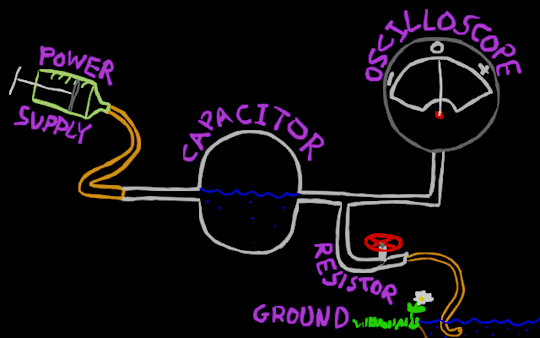


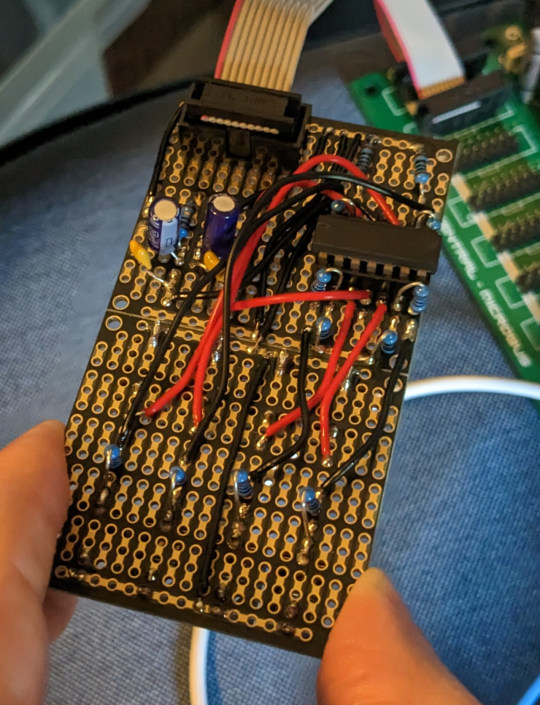
#memento potato#electronics#diy#synth#modular synth#modular synth diy#circuit design#tutorial#explained#magic#artisanal jank
24 notes
·
View notes
Text
DAY 546 - MACHINE ECHOES
original music + animation
#abstract#art#surreal#scifi#daily#futuristic#trippy#neon#graphic design#3d#animation#cyberpunk#futuristic art#retro futurism#retro#circuit#techno#beatmakers#electronic music#musicproducer#ableton#motion design#daily art#everyday#artists on tumblr#vjloops#concertvisusals#technology#geometric#close up
17 notes
·
View notes
Text
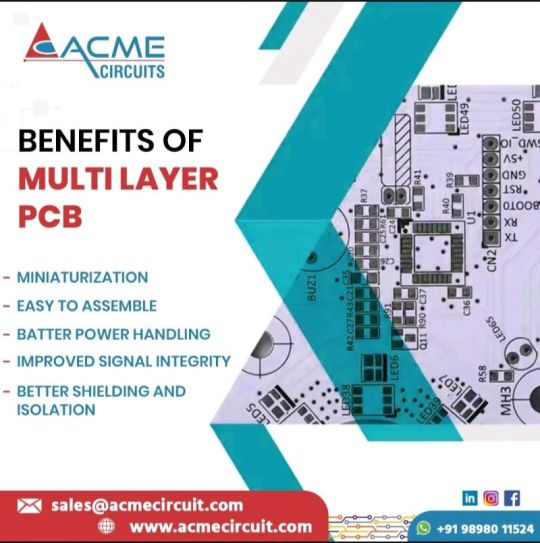
Multilayer PCBs (Printed Circuit Boards) offer numerous advantages over their single-layer or double-layer counterparts. These benefits arise from their enhanced design capabilities, improved performance, and greater flexibility. Here are some key advantages of multilayer PCBs:
#PCB#printed circuit board manufacturers#electronic cable assembly#pcb manufacturing#pcb assembly manufacturer#pcb assembly services#pcb board manufacturer#printed circuit board manufacturer in india#circuit board manufacturing#pcb exporters#pcba#pcb manufacturer#pcb design#pcbassembly#multilayer pcb
2 notes
·
View notes
Text
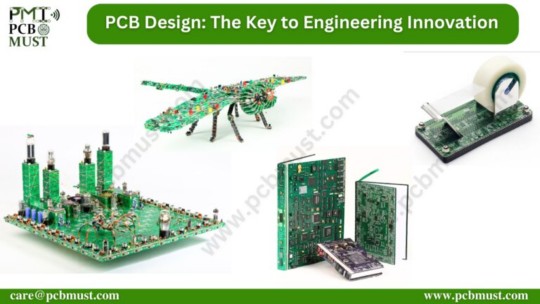
PCB Design: The Key to Engineering Innovation
3 notes
·
View notes
Text

i know i already shared a "final design" but this is the final final design xDDDD
made it so the lwoest note is 1v rather than 0v for stability reasons
otherwise the gate still works and the sample and hold circuit works much better now
payday soon so i'll order the parts, make sure the footprints for the buttons are the right size, and then i'll order the boards
i started off this particular project quite nervous coz this is a fairly involved and big one but i worked out everything except the sample and hold by myself
it's truly the most "my design" design i've done
already brainstorming adding an octave select switch and how to have more than 1 octave of buttons
but this will be the prototype that will control my whole system when i've built it all
5 notes
·
View notes
Photo
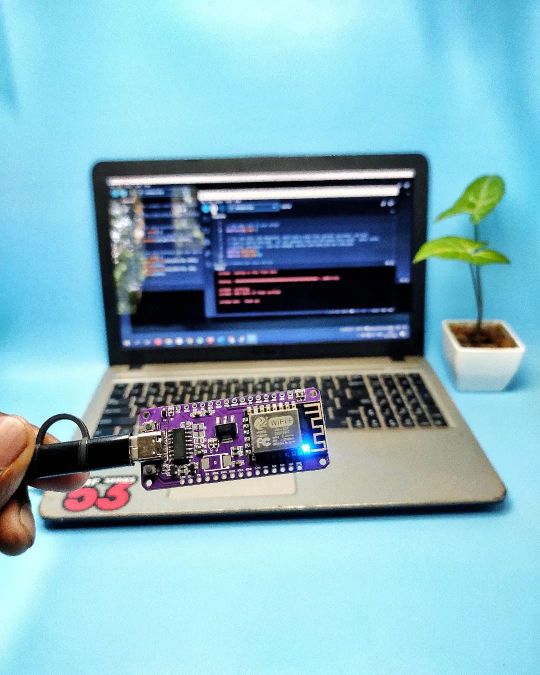
Purple NodeMCU with type C PCBs from @jlcpcb Full making video uploaded in channel #nodemcu #jlcpcb #pcb #pcbassembly #makers #diy #design #electronics #components #circuit https://www.instagram.com/p/Cl1LV5wLi_R/?igshid=NGJjMDIxMWI=
3 notes
·
View notes
Text
Gentle reminder that
Smart ≠ Wise ≠ Literate ≠ Jerk ≠ Know-it-all
A character can be really good with, say, numbers but know absolutely nothing of history. Or be really clever and tactical but never once in their life has opened a book. Or be a genius when it comes to music, but being a complete idiot when trying to efficiently arrange objects in certain space. Or instinctively coming up with clever solutions, but lacking the words to express them. Or having a very vast vocabulary, but but it's not someone actually clever.
The say way someone can posses a lot of knowledge in a variety of areas but being unable to put that knowledge to practice, to use, or intertwine that knowledge to find a new and creative way to come up with an answer to a problem.
There are a lot of way to be smart. A character can be smart and ignorant. A character can be smart but know oh-so-little about a lot of things.
Yes, the character can be your stereotypical know-it-all that has all the solutions in less than a minute, doesn't miss a thing, gets impatient and cocky because no one can keep up with them and so one, but it doesn't need to.

#Like look at me- I'm what everyone calls smart and do you think I'm a clever jerk that effortlessly solves all their problems??? lmao no#I'm just someone with like two braincells available- ask me anything about- idk- design#I can have a lengthy conversation about physics or history and so on#but try to get me to talk about cars#or fashion#or modern politics#i don't know a THING about those#You can also take as an example my friend- she's really REALLY smart#she's good with numbers- whatever thise numbers may be#she can do math like a calculator#all physics problems- no matter how elaborate and difficult - are a piece of cake for her#she can see a room a calculate how much paint or cement or wall tiles or rafters or whatever you'll need to make a renovation#she know how to code and knows how to make electronic circuits#try and ask her what ethereal means#she's so bad with words and explaining herself to the point that I am her intermediary when we're in a group#and she doesn't know English either#she knows only one language#I could go on and on#about people who are really smart in something and really dumb in another thing#myself included#it's more common to be smart in a few things and dumb in others than be a complete genius#and ofc you CAN write a complete genius if you want to#there's nothing wrong with it#just saying that it's not the only way to be smart or clever#writing#writers#writers on tumblr#writing humor#long post
19K notes
·
View notes
Text
Designing Tomorrow: The Basics of Electronic Circuit Designs
Welcome, future innovators, to the exciting world of electronic circuit designs! This blog post is your launchpad into understanding the fundamental building blocks that power the technology we use every day and pave the way for the marvels of tomorrow.

What is a circuit?
Imagine a network of roads in electronic repair services where electrons, instead of cars, flow through interconnected components like resistors, capacitors, transistors, and more. These components act like traffic lights, stop signs, and bridges, controlling the flow and behavior of the electrons to achieve specific functions. Designing a circuit is like creating a blueprint for this electron traffic, directing it to perform tasks like lighting an LED, amplifying a sound signal, or even processing complex data.
The building blocks:
Resistors: Think of these as roadblocks, regulating the current flow like adjustable valves.
Capacitors: These act like reservoirs, storing electrical energy for later use, similar to dams.
Transistors: Imagine them as electronic switches, turning current on or off based on a control signal, like traffic lights.
Integrated Circuits (ICs): These are miniaturized cities of electronic components, containing millions of transistors and other elements on a single chip, performing complex functions.
Understanding the basics:
Ohm's Law: This fundamental equation governs the relationship between voltage, current, and resistance, guiding you in calculating how components interact.
Kirchhoff's Laws: These two laws ensure the conservation of charge and current within a circuit, like the rules of traffic flow.
Logic Gates: These are the building blocks of digital circuits, performing basic operations like AND, OR, and NOT, forming the foundation of digital electronics.
Why design circuits?
Bring your ideas to life: From simple gadgets to complex robots, circuit design empowers you to create functional devices based on your imagination.
Shape the future: Understanding circuits opens doors to careers in cutting-edge fields like robotics, renewable energy, and artificial intelligence.
Solve real-world problems: Electronics are everywhere, and your design skills can contribute to solutions in healthcare, environmental monitoring, and sustainable living.
This is just the beginning! Numerous resources are available online and in libraries, offering tutorials, simulations, and starter kits to help you experiment and build your own circuits. Remember, the most important ingredient is your curiosity and passion for exploring the world of electronics.
Source
0 notes
Text
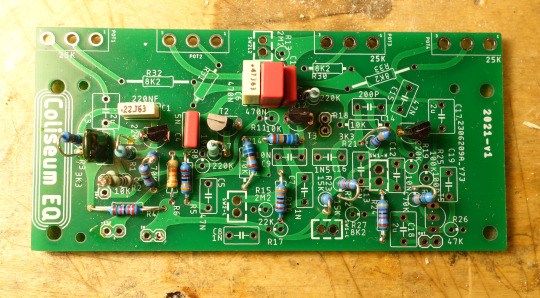
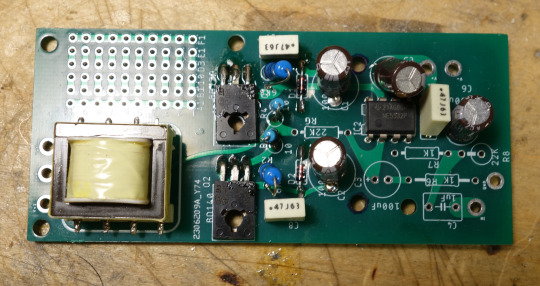
Two of the three PCB's that make up the piece of rack gear I call my DI box.
on the left, is a clone of the EQ section from a 70s Sunn Coliseum Bass amp, Half assembled.
It is a 4 knob eq, with controls idiosyncratically (but accurately) labeled high, mid, hi bass, and low bass. the high and mid controls each have a 2 position frequency switch. The result is a very versatile, but still easy to tune tone control.
On the right is my standard line output pcb, fully assembled, except for the gain setting resistor.
this is a transformer coupled design, which uses a small power amp, to ensure it cant be overloaded. I didn't know it when I designed this, but this is almost identical to the design used by urei in the late 1970s, notably in the 1178, and la4a.
It has better isolation and a lower noise floor then a modern integrated design, and is actually cheaper then the IC solutions sold by That crop.
I used the same pcb with a different transformer as a reverb driver in my rack mount spring reverb.
If you have ever listened to my music you have heard both these circuits on synth, guitar, bass, and even my drum machines. I've also sold several identical units to local studios.
also, the spring reverb is my go to reverb now. So its on most tracks as well.
#music#electronics#diy electronics#homebrew electronics#diy recording#recording studio#electronics technician#technology#pcb design#pcb#circuit board#circuitry#Sunn#guitar amp#electric guitar
14 notes
·
View notes
Text
Printed Circuit Board Basics
Most of us are using Printed Circuit Board in our daily life. Printed Circuit Boards are used in almost all the Electronic products, from consumer gadgets such as PCs, tablets, smartphones, and gaming consoles to industrial and even high tech products in strategic and medical electronics domains.
Here, we have some statistics for you that shows how many electronic devices connect worldwide from 2015 to 2025. This statistic shows an increase in the use of a number of PCB in people daily life. Hence, CircuitWala took this opportunity to provide a basic knowledge about PCB via this article.
There are so many books available online which teach about Printed Circuit Board design and hardware part. There are few links available online which shows only a few basic fundamentals of PCB and few are there for Basics of Printed Circuit Board (PCB) Design. Few which gives good know knowledge on Printed Circuit Board terminology. But in the end for the hobbyist, there is no such material available which make their work easy.
Now days there few online designing websites available which allow hobbyist and students to create their design and Printed Circuit Board fabrication part. These websites provide limited features and charge high for the full edition. We, @CircuitWala are in try to provide one platform which provides plenty of Printed Circuit Board knowledge digitally to make your work simple and easy.
Alternatives of PCB include wire wrap and point-to-point construction. Creating a layout of PCB is a little bit time-consuming method as compared to its alternative solution but manufacturing of PCB is cheaper and faster then other wiring methods as electronic components are mounted and wired with one single part.
Let’s start with some basics of Printed Circuit Board with this article. Here in this article we will discuss about history of PCB to understand the emerge of PCB, Types of PCB to make your complex PCB a very simple using different types, Usage of PCB to provide you an idea to create more Printed Circuit Board projects, Advantages and Disadvantages, Possible Future to know about new technological change in Printed Circuit Board manufacturing and also about how to destroy and manage your PCB’s e-waste? We know you are eager to know all the stuff in details but before that let’s make a simple definition of Printed Circuit Board.
What is Printed Circuit Board?Printed Circuit Board is an electronic device made of conductive material(FR-4) like copper which connects components mounted on it to to get desired output by providing an input on another end.
When the board has not mounted with any of the components is called as Printed Circuit Board or Printed Wired Board. Mounting of an electronic component on Printed Circuit Board is called as PCB assembly.
History of Printed Circuit BoardThe invention of Printed Circuit Board was by Austrian engineer Paul Eisler as part of a radio set while working in England around 1936.
In early days before Printed Circuit Board became common in use, Point-to-Point construction was used. This meant some bulky and unreliable design that required plenty of sockets and regular replacement of it. Most of this issue directly address when PCB went into regular production.
Originally, every electronic component had wire leads, and the PCB had holes drilled for each wire of each component. The components’ leads were then passed through the holes and soldered to the PCB trace. This method of assembly is called Through-Hole construction. There is one other method to mount component is called as Surface Mount.
Type of Printed Circuit BoardPCBs are produced from the different types of material and on the basis of that material PCBs are divided mainly into two parts: Rigid PCB and Flexible PCB. Nowadays, a combination of Rigid and flexible PCB is also possible and that is called as Flexi-Rigid PCBs.
Most of the PCBs are built in layers. The inner layer is the base material called as a substrate. Rigid PCBs are mainly made of material like epoxy materials and Flexible PCBs are made of plastic material that can withstand high temperatures.
Rigid PCBs are generally, hard materials that hold the component in a better way. The motherboard in the tower of a computer is the best example of Rigid PCBs. Flexible PCBs fundamental material allows PCB to fit into forms that Rigid PCBs can not. Flexible PCBs can turn round without harmful the circuit on PCB.
All Rigid and Flexible PCBs can come in three formats by layers: Single Layer, Double Layer, and Multi-Layer.
1. Single Layer PCBSingle Layer PCBs have been around since the late 1950s and still dominate the world market in sheer piece volume. Single Sided PCBs contain only one layer of conductive material and are best suited for low-density designs. Single-sided PCBs are easy to design and quick to manufacture. They serve as the most lucrative platform in the industry.
2. Double Layer PCBDouble Layered printed circuit board technology is conceivably the most popular type of PCB in the industry. Double Sided PCB (also known as Double-Sided Plated Thru or DSPT) circuits are the gateway to advanced technology applications. They allow for a closer (and perhaps more) routing traces by alternating between top and bottom layers using vias.
3. Multi Layer PCB
Multilayer PCB is a circuit board that has more than two layers. Unlike a Double-Sided PCB which only has two conductive layers of material, all multilayer PCBs must have at least three layers of conductive material which are buried in the center of the material.
Usage of Printed Circuit BoardBy reading this article till this point, we hope that you are now able to get about printed circuit boards. Now, we will make you understand about different applications of printed Circuit Board.
In this digital world, Printed Circuit Board is in almost all our daily life electronic devices and in our industrial electronics as well. Below are the industries where PCBs are used:
Possible FutureNowadays, most of the circuits are replaced to produce Printed Circuit Board from the old methods. Revolution in technology made many of the processes automated and hence it is easy to manufacture PCB. But still, these processes are a bit expensive to hire, involve toxic waste and use high temperatures and acids. With technological advances we have seen in the past years, it is not hard to imagine PCB will soon be revolutionized. Not only that but research institutes predict a more ‘green’ future for PCBs; PCBs being made of paper.
Electronic Waste (e-waste)Electronic Waste or e-waste is described as discarded electrical or electronic devices. Informal processing of e-waste in developing countries can lead to adverse human health effects and environmental pollution.
Electronic scrap components contain a hazardous substance such as lead, cadmium, beryllium, or brominated flame retardants. Recycling and disposal of e-waste may involve significant risk to health of workers and communities in developed countries and great care must be taken to avoid unsafe exposure in recycling operations
Nowadays, developing countries are encouraging electronic users to take care while recycling the e-waste or submit them to the organization who are involved in such activities.
SummaryIn this blog, we have learned the basics of Printed Circuit Board. CircuitWala is planning to write as many blogs to provide more and more knowledge of Printed Circuit Board. Either it is basics or manufacturing or usages or advantages and disadvantages of PCBs. We will also try to make our users/customers up to date for the new technology innovations, including past histories and revolution of the PCB industries.
In the next blog, we will look at more briefly about the different types of Printed Circuit Board. We also understand the process to make it and different usage and application for the same.
#electronic circuit design company#pcb circuit manufacturer in ahmedabad#pcb design & manufacturing services#printed circuit board companies#printed circuit board order online#PCB manufacturer#Printed Circuited Board#double layer PCB#PCB Quality Control
2 notes
·
View notes
Text
0 notes
Text

As healthcare embraces wearable technology, ensuring device security is paramount to protect sensitive patient data. Wearables, such as health monitors and medical tracking devices, transmit critical data, making them potential targets for cyber threats. Voler Systems is at the forefront of secure healthcare wearables, applying their deep expertise in electronics design to implement robust data protection and secure communication protocols. With Voler’s experience in designing reliable, secure, and compliant wearables, healthcare providers can confidently integrate wearable devices while prioritizing patient privacy and safety.
#electronic design services#electronics product design#wearable medical device#medical device design#medical device development company#Analog Circuit Design#Wearable Medical Device
1 note
·
View note